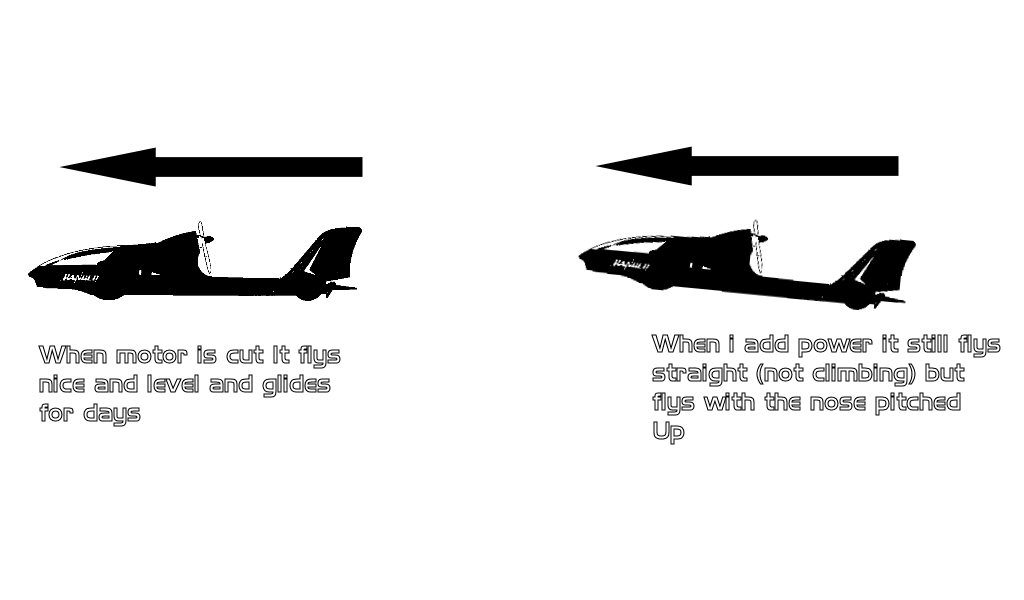sumone
Active member
I recently bought the volantex ranger 1600 and took it for It's first flight last week.
It flew no problem when un-powered it glides beautifully but when add power it seems to pitch the nose up while still flying straight .
It seems to loose a lot of efficiency when i do this.
I guess the motor needs some shims to adjust thrust angle but not sure if it needs to point up more or down more.
My guess is tilt the motor down more.
Anyone here had this issue with a pusher and fixed it ?

It flew no problem when un-powered it glides beautifully but when add power it seems to pitch the nose up while still flying straight .
It seems to loose a lot of efficiency when i do this.
I guess the motor needs some shims to adjust thrust angle but not sure if it needs to point up more or down more.
My guess is tilt the motor down more.
Anyone here had this issue with a pusher and fixed it ?

Last edited:
